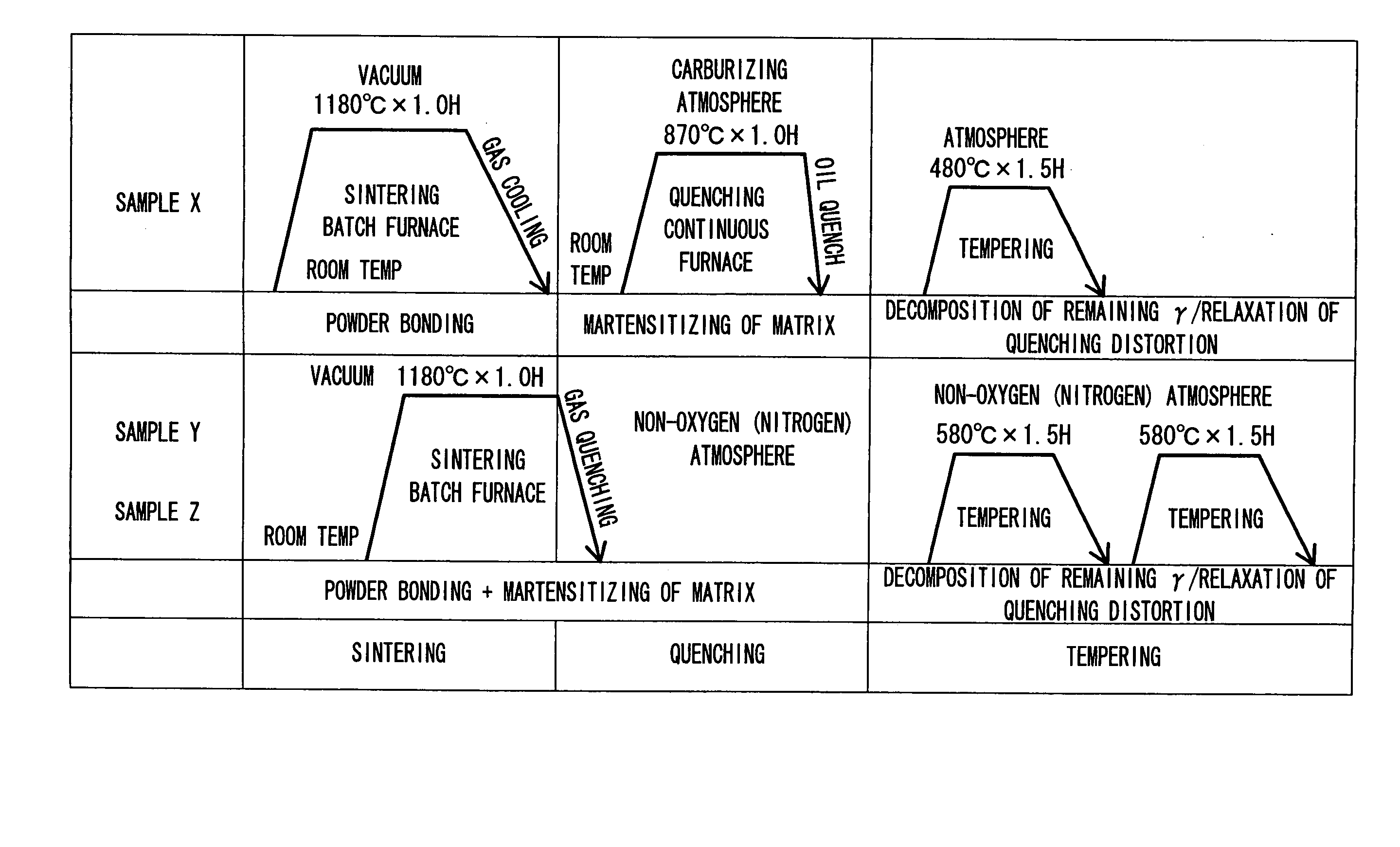Wear-resistant elements and method of making same
a technology of wear-resistant elements and elements, applied in the direction of solid-state diffusion coating, coating, metallic material coating process, etc., can solve the problems of difficult to maintain desired oil-retaining properties, surface wear uniformity, and possibility of seizing, so as to promote nitriding treatment, high-reliable wear-resistant elements, and enhance hardness
- Summary
- Abstract
- Description
- Claims
- Application Information
AI Technical Summary
Benefits of technology
Problems solved by technology
Method used
Image
Examples
example 1
[0064] Three kinds of iron-based alloy powder were formed into a predetermined shape, and each compact so shaped was vacuum-sintered at a predetermined temperature (for example, 1180° C.) to thereby form a sintered compact, which was in turn heat-treated in a predetermined fashion, and thereafter, the surface of each compact was inspected. The materials of the samples (sintered compacts) correspond to SKH51, and the samples are hereinafter referred to as samples X, Y and Z.
[0065] Table 1 indicates results of a component analysis of samples X, Y and Z after the heat treatment.
TABLE 1unit: wt %OthersMaterialWMoCrVSiC(Fe etc.)Sample X5.5˜4.0˜3.5˜1.4˜0.4˜1.2˜≦1.06.76.05.02.40.91.8Sample Y5.5˜4.0˜3.5˜1.4˜0.4˜0.9˜≦1.06.76.05.02.40.91.4Sample Z5.5˜4.0˜3.5˜1.4˜0.4˜0.9˜≦1.06.76.05.02.40.91.4
[0066]FIG. 5 depicts heat treatment patterns conducted to the materials of the samples. Table 2 indicates the material characteristics of the samples.
TABLE 2DensityHardnessTransverse RuptureMaterial(...
PUM
| Property | Measurement | Unit |
|---|---|---|
| temperature | aaaaa | aaaaa |
| porosity | aaaaa | aaaaa |
| porosity | aaaaa | aaaaa |
Abstract
Description
Claims
Application Information
 Login to View More
Login to View More - R&D
- Intellectual Property
- Life Sciences
- Materials
- Tech Scout
- Unparalleled Data Quality
- Higher Quality Content
- 60% Fewer Hallucinations
Browse by: Latest US Patents, China's latest patents, Technical Efficacy Thesaurus, Application Domain, Technology Topic, Popular Technical Reports.
© 2025 PatSnap. All rights reserved.Legal|Privacy policy|Modern Slavery Act Transparency Statement|Sitemap|About US| Contact US: help@patsnap.com



